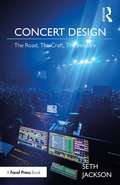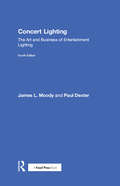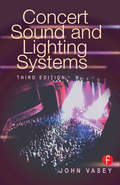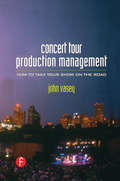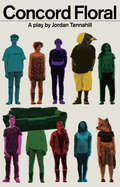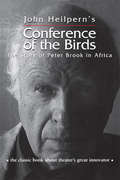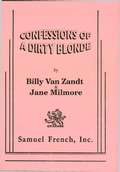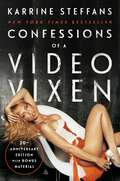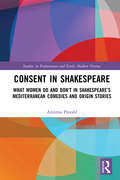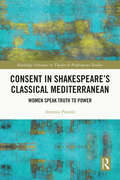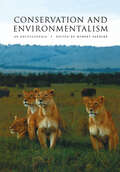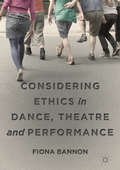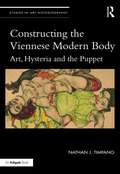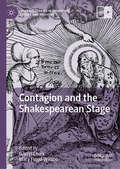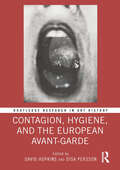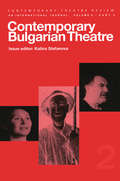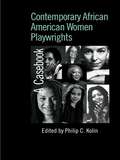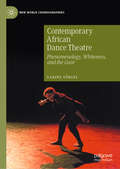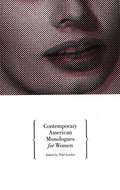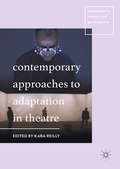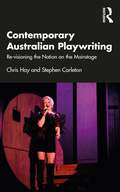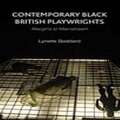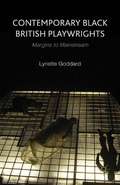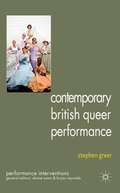- Table View
- List View
Concert Design: The Road, The Craft, The Industry
by Seth JacksonConcert Design: The Road, The Craft, The Industry offers an exceptional journey though the world of concert design, exploring not only its unique design attributes but also the industry that has grown around it and how to make a career of ‘the road’. Concert designer Seth Jackson analyzes how the industry has changed over the last three decades – from its early days of ‘no rules’ and ‘cowboys’ to a thriving and growing industry with countless career opportunities. Drawing on 25 years of experience and clients ranging from Carrie Underwood to Don Henley, he explores design techniques, working with Artists and directors, the rigors of concert touring, and navigating a career path through a challenging industry. The book also includes stories from numerous industry luminaries such as Steve Cohen, Jeff Ravitz, Eric Loader, Howard Ungerleider, and Jim Lenahan, along with Jackson’s own experiences. Written for aspiring concert lighting designers and students of Concert Lighting and Theatre Lighting courses, Concert Design is an excellent resource for anyone who has ever wondered what backstage life is really all about.
Concert Lighting: The Art and Business of Entertainment Lighting
by James Moody Paul DexterConcert Lighting: Tools, Techniques, Art, and Business Fourth Edition provides readers with an updated look at how to succeed in the complex world of concert lighting design and technology. The authors have reorganized the book into three comprehensive and thoroughly revised sections, covering history, equipment and technology, and design, and containing new information on LED technology, pixel mapping, projection options, media servers, automated lighting, solutions for moving lights, DMX, and Ethernet problems, and designer communication and collaboration. This book also explores the cross-media use of concert lighting techniques in film, video, theatre, and the corporate world, highlighted with advice from master designers such as Bruce Rodgers, Cosmo Wilson, and Sarah Landau. From securing precious contracts to knowing the best equipment to use to design a show, Concert Lighting covers everything a designer needs to know about working in the touring industry.
Concert Sound and Lighting Systems
by John VaseyConcert Sound and Lighting Systems provides comprehensive coverage of equipment and setup procedures for touring concert systems. The new edition will cover the new equipment now available and discuss other venues where the skills and technology are being used. This new edition incorporates the continuing developments in concert sound and lighting systems maintaining the premise that the reader has had no previous experience. The practical how-to illustrations teach the reader about the equipment, and this thoroughly updated edition will include new equipment such as radio microphones, in-ear monitoring, digital audio products and digital lighting products. The author also discusses new venues outside thetraditional concert touring environment and applies the skills and technology to such diverse events as product launches, theatrical arena spectaculars and outdoor stadium productions. In addition to an introductory section on touring concerts, there are sections on sound systems and lighting systems and an explanation of how all the parts fit together to create a professional, safe, efficient show.
Concert Tour Production Management
by John VaseyConcert Tour Production Management deals with the business of production and sets out guidelines to follow in order to literally get the show on the road. Concert Tour Production Management provides the basic information to manage the production for a touring concert from start to finish in the most effective and efficient way possible. Beginning with an introduction to the touring concert, explaining who's who on the road, the author guides you through a tour setup using a realistic itinerary that visits different types of venues using the production manager's checklists. He also covers the role of the local promoter's production manager and how to manage a crew. The appendices provide some basic electrical formulae, a performance contract, a technical rider, a production checklist to suit most situations, and several forms to help expedite routine tasks.
Concord Floral
by Jordan TannahillConcord Floral is a one-million-square-foot abandoned greenhouse and a refuge for neighbourhood kids; a place all to themselves in which to dream, dare, and come of age. But hidden there is a secret no one wants to confront, and when two friends stumble upon it they set off an unstoppable chain of events, from shadows in parking lots to phone calls from the grave. It's time for the teens of Concord Floral to start talking.
Conference of the Birds: The Story of Peter Brook in Africa
by John HeilpernConference of the Birds is John Heilpern's true story of an extraordinary journey. In December 1972, the director Peter Brook and an international troupe of actors (Helen Mirren and Yoshi Oida among them) left their Paris base to emerge again in the Sahara desert. It was the start of an 8,500-mile expedition through Africa without precedent in the history of theater. Brook was in search of a new beginning that has since been revealed in all his work--from Conference of the Birds and Carmen to The Mahabharata and beyond. At the heart of John Heilpern's brilliant account of the African experiment is a story that became a search for the miraculous.
Confessions Of A Dirty Blonde
by Jane Milmore Billy Van ZandtComedy / 6m, 2f, plus 1 lion / Interior / Get the boxer shorts, wigs and size ten pumps! The masters of modern farce are back with an outrageously zany comedy. The year is 1962. Living legend Lillian Lamour, a Mae West like sex siren, comes out of seclusion for a one night tribute at Carnegie Hall. While recreating her famous 1933 Time Magazine cover, a lion bites her world famous derriere exposing, among other things, that she is a he. Now Hollywood's best kept secret will be revealed unless Lillian's press agent can put a lid on things. Neither the gangster crooner ex boyfriend nor Lillian's wallflower daughter is aware of the truth, but the hotel doctor knows and can't convince anyone else. This screwball comedy in the tradition of the Marx Brothers is a scream.
Confessions of a Video Vixen
by Karrine SteffansPart tell-all, part cautionary tale, this emotionally charged memoir from a former video vixen nicknamed 'Superhead' goes beyond the glamour of celebrity to reveal the inner workings of the hip-hop dancer industry—from the physical and emotional abuse that's rampant in the industry, and which marked her own life—to the excessive use of drugs, sex and bling.Once the sought-after video girl, this sexy siren has helped multi-platinum artists, such as Jay-Z, R. Kelly and LL Cool J, sell millions of albums with her sensual dancing. In a word, Karrine was H-O-T. So hot that she made as much as $2500 a day in videos and was selected by well-known film director F. Gary Gray to co-star in his film, A Man Apart, starring Vin Diesel. But the film and music video sets, swanky Hollywood and New York restaurants and trysts with the celebrities featured in the pages of People and In Touch magazines only touches the surface of Karrine Steffans' life.Her journey is filled with physical abuse, rape, drug and alcohol abuse, homelessness and single motherhood—all by the age of 26. By sharing her story, Steffans hopes to shed light on an otherwise romanticised industry and help young women avoid the same pitfalls she encountered. If they're already in danger, she hopes to inspire them to find a way to dig themselves out of what she knows first-hand to be a cycle of hopelessness and despair.UPDATE: As the music industry started to have its own reckoning with men who've behaved badly, even criminally, Confessions has been discussed in some quarters as an early warning bell, with Karrine as a feminist icon who shined a light when no one wanted her to and championed sex positivity before it was embraced. Now she talks about what it has been like to watch the tide turn and the lessons still to be learned.
Consent in Shakespeare: What Women Do and Don’t Say and Do in Shakespeare’s Mediterranean Comedies and Origin Stories (Studies in Performance and Early Modern Drama)
by Artemis PreeshlBy examining how female characters speak and act during coming of age, engagement, marriage, and intimacy, Consent in Shakespeare will enhance understanding about how and why women spoke, remained silent, or acted as they did in relation to their intimate partners in Early Modern and contemporary private and public situations in and around the Mediterranean. Consent in intimate relationships is front and center in today’s conversations. This book re-examines the verbal and physical interactions of female-identified characters in Early Modern and contemporary cultures in Shakespeare’s Mediterranean comedies and the sources from which he derived his plays. This re-examination of the words that women say or do not say, and actions that women do or do not take, in Shakespeare’s Mediterranean plays and his probable sources sheds light on how Shakespeare’s audiences might have perceived Mediterranean cultural mores and norms. Assessment of source materials for Shakespeare’s comedies set in the Balkans, France, Italy, the Near East, North Africa, and Spain suggests how women of diverse backgrounds communicated in everyday life and peak life experiences in the Early Modern era. Given Shakespeare’s impact worldwide, this initiative to shift the conversation about the power of consent of female protagonists and supporting characters in Shakespeare’s Mediterranean plays will further transform conversations about consent in class, board and conference rooms, and the international stage.
Consent in Shakespeare’s Classical Mediterranean: Women Speak Truth to Power (Routledge Advances in Theatre & Performance Studies)
by Artemis PreeshlConsent in Shakespeare’s Classical Mediterranean fills a gap in knowledge about how female-identified, gender-fluid, and non-binary characters made choices about intimacy, engagement, and marriage in Shakespeare’s classical Mediterranean plays.This classical sequel explores how female-identified, gender-fluid, and non-binary characters accessed agency in Shakespeare’s Mediterranean plays set in classical Troy, Athens, Thebes, Antioch, Ephesus, Mytilene, the North African Pentapolis, Tarsus, Egypt, Rome, Antium, Britain, Sardis, Philippi, Sicily, greater Bohemia, and the Balkan region. Through the lens of sources from Eastern and Western Europe, the Middle East, and the Maghrib, Shakespeare’s heroines and their supporters may have initially appeared to conform to Early Modern contexts, but the diverse backgrounds of female-identified, gender-fluid, and non-binary characters impacted the right to consent to friendship, affection, betrothal, and marriage in the classical Mediterranean. By focusing on perspective views about female-identified, gender-fluid, and non-binary characters in and around Eastern and Western Europe, the Middle East, and the Maghreb, classical realities collide with Early Modern preconceptions and misconceptions to reveal commonalities and differences in the lived experiences of female-identified and non-binary royalty, nobility, servants, enslaved peoples, matchmakers, courtesans, sex workers, madams, herbalists, tailors, and merchants.This study will be of great interest to students and scholars in Theatre, Middle East Studies, Asian Studies, Eastern European and Eurasian Studies, African and Maghrib Studies, and Social Justice Studies.
Conservation and Environmentalism: An Encyclopedia
by Robert PaehlkeFocusing on both problems and solutions, this authoritative reference work maintains a healthy balance between science and the social sciences in its coverage of all aspects of the environment. The book is arranged alphabetically and is divided into three major sections: Ecology, Pollution, and Sustainability. The list of 240 contributors reads like a who's who of the world's leading conservation and environmental professionals.Best Reference Source Outstanding Reference Source
Considering Ethics in Dance, Theatre and Performance
by Fiona BannonThis book asks important questions about making performance through the means of collaboration and co-created practice. It argues that we can align ethics and aesthetics with collaborative performance to realise the importance of being in association with one another, and being engaged through our shared imaginations. Evident in the examples of practice visited in this study is the attention given by a number of practitioners to the development of shared, co-operative modes of creation. Here, we can appreciate ethical work as being relational, forged in association with the others as we cultivate ideas that matter.In looking at a range of work from practitioners including Meg Stuart, Rosemary Lee, Deufert&Philschke and Fevered Sleep, Considering Ethics in Dance, Theatre and Performance explores ways that we rehearse by attending to ethics, aesthetics and co-creation. In learning to listen, to observe, to co-operate and to negotiate, these practitioners reveal the ways that they bring their work into existence through the transmission of shared meaning.
Constructing the Canon of Early Modern Drama
by Jeremy LopezFor one hundred years the drama of Shakespeare's contemporaries has been consistently represented in anthologies, edited texts, and the critical tradition by a familiar group of about two dozen plays running from Kyd's Spanish Tragedy to Ford's 'Tis Pity She's a Whore by way of Dekker, Jonson, Middleton and Webster. How was this canon created, and what ideological and institutional functions does it serve? What preceded it, and is it possible for it to become something else? Jeremy Lopez takes up these questions by tracing a history of anthologies of 'non-Shakespearean' drama from Robert Dodsley's Select Collection of Old Plays (1744) through those recently published by Blackwell, Norton, and Routledge. Containing dozens of short, provocative readings of unfamiliar plays, this book will benefit those who seek a broader sense of the period's dazzling array of forms.
Constructing the Viennese Modern Body: Art, Hysteria, and the Puppet (Studies in Art Historiography)
by Nathan J. TimpanoThis book takes a new, interdisciplinary approach to analyzing modern Viennese visual culture, one informed by Austro-German theater, contemporary medical treatises centered on hysteria, and an original examination of dramatic gestures in expressionist artworks. It centers on the following question: How and to what end was the human body discussed, portrayed, and utilized as an aesthetic metaphor in turn-of-the-century Vienna? By scrutinizing theatrically “hysterical” performances, avant-garde puppet plays, and images created by Oskar Kokoschka, Koloman Moser, Egon Schiele and others, Nathan J. Timpano discusses how Viennese artists favored the pathological or puppet-like body as their contribution to European modernism.
Contagion and the Shakespearean Stage (Palgrave Studies in Literature, Science and Medicine)
by Mary Floyd-Wilson Darryl ChalkThis collection of essays considers what constituted contagion in the minds of early moderns in the absence of modern germ theory. In a wide range of essays focused on early modern drama and the culture of theater, contributors explore how ideas of contagion not only inform representations of the senses (such as smell and touch) and emotions (such as disgust, pity, and shame) but also shape how people understood belief, narrative, and political agency. Epidemic thinking was not limited to medical inquiry or the narrow study of a particular disease. Shakespeare, Thomas Middleton, Ben Jonson, Thomas Dekker and other early modern writers understood that someone might be infected or transformed by the presence of others, through various kinds of exchange, or if exposed to certain ideas, practices, or environmental conditions. The discourse and concept of contagion provides a lens for understanding early modern theatrical performance, dramatic plots, and theater-going itself.
Contagion, Hygiene, and the European Avant-Garde (Routledge Research in Art History)
by David Hopkins Disa PerssonThis interdisciplinary collection of essays brings together scholars in the fields of art history, theatre, visual culture, and literature to explore intersections between the European avant-garde (c. 1880–1945) and themes of health and hygiene, such as illness, contagion, cleanliness, and contamination. Examining the artistic oeuvres of some of the canonical names of modern art – including Edgar Degas, Edvard Munch, Pablo Picasso, George Orwell, Marcel Duchamp, and Antonin Artaud – this book investigates instances where the heightened political, social, and cultural currencies embedded within issues of hygiene and contagion have been mobilised, and subversively exploited, to fuel the critical strategy at play. This edited volume promotes an interdisciplinary and socio-historically contextualised understanding of the criticality of the avant-garde gesture and cultivates scholarship that moves beyond the limits of traditional academic subjects to produce innovative and thought-provoking connections and interrelations across various fields. The book will be of interest to scholars working in art history, literature, theatre, cultural studies, modern history, medical humanities, and visual culture.
Contemp Bugarian Theatre 2
by StefanovaFirst Published in 1998. Routledge is an imprint of Taylor & Francis, an informa company.
Contemporary African American Women Playwrights: A Casebook (Casebooks on Modern Dramatists)
by Philip C. Kolin'The impressive array of scholars gathered in this collection, all experts in the field, read the plays with nuance and situate them deftly within their cultural and historical contexts. Scholars of contemporary theater and drama and of African American literature will find value in this engaging collection.' – Choice 'For students and scholars of American theatre and drama generally and African American theatre and drama most particularly, this is an extremely valuable critical source.' – Harry Elam, Stanford University, USA In the last fifty years, American and World theatre has been challenged and enriched by the rise to prominence of numerous female African American dramatists. Contemporary African American Women Playwrights is the first critical volume to explore the contexts and influences of these writers, and their exploration of black history and identity through a wealth of diverse, courageous and visionary dramas. Kolin compiles a wealth of new essays, comprising: Yale scholar David Krasner on the dramatic legacy of Lorraine Hansberry, Zora Neale Hurston, Marita Bonner and Georgia Douglas Johnson individual chapters devoted to: Alice Childress, Sonia Sanchez, Adrienne Kennedy, Ntozake Shange, Pearl Cleage, Aishah Rahman, Glenda Dickerson, Anna Deavere Smith and Suzan Lori-Parks an essay and accompanying interview with Lynn Nottage comprehensive discussion of attendant theatrical forms, from choreopoems and surrealistic plays, to documentary theatre and civil rights dramas, and their use in challenging racial and gender hierarchies. Contributors: Brandi Wilkins Catanese, Soyica Diggs, James Fisher, Freda Scott Giles, Joan Wylie Hall, Philip C. Kolin, David Krasner, Sandra G. Shannon, Debby Thompson, Beth Turner and Jacqueline Wood.
Contemporary African Dance Theatre: Phenomenology, Whiteness, and the Gaze (New World Choreographies)
by Sabine SörgelThis book is the first to consider contemporary African dance theatre aesthetics in the context of phenomenology, whiteness, and the gaze. Rather than a discussion of African dance per se, the author challenges hegemonic perceptions of contemporary African dance theatre to interrogate the extent to which white supremacy and privilege weave through capitalist necropolitics and determine our perception of contemporary African dance theatre today. Multiple aesthetic strategies are discussed throughout the book to account for the affective experience of ‘un-suturing’ that touches white spectatorship and colonial guilt at their core. The critical analysis covers a broad range of dance choreography by artists from the Democratic Republic of Congo, Ivory Coast, South Africa, Canada, Europe, and the US as they travel, create, and show their works internationally to global audiences to contest racial divides and white supremacist politics.
Contemporary American Monologues for Women
by Todd LondonAudition monologues for female characters selected from recent works by American playwrights including Tony Kushner, Jon Robin Baitz, Constance Congdon, Paula Vogel, Donald Margulies, Emily Mann, Eric Bogosian, Nicky Silver, and others. Unique to the TCG monologue series is a bibliography of other works by the playwrights included.
Contemporary Approaches to Adaptation in Theatre (Adaptation in Theatre and Performance)
by Kara ReillyThis book examines contemporary approaches to adaptation in theatre through seventeen international case studies. It explores company and directorial approaches to adaptation through analysis of the work of Kneehigh, Mabou Mines, Robert Le Page and Katie Mitchell. It then moves on to look at the transformation of the novel onto the stage in the work of Mitchell, and in The Red Badge of Courage, The Kite Runner, Anne Frank, and Fanny Hill. Next, it examines contemporary radical adaptations of Trojan Women and The Iliad. Finally, it looks at five different approaches to postmodern metatheatrical adaptation in early modern texts of Hamlet, The Changeling, and Faustus, as well as the work of the Neo-Futurists, and the mash-up Medea/Macbeth/Cinderella. Overall, this comprehensive study offers insights into key productions, ideas about approaches to adaptation, and current debates on fidelity, postmodernism and remediation.
Contemporary Australian Playwriting: Re-visioning the Nation on the Mainstage
by Stephen Carleton Chris HayContemporary Australian Playwriting provides a thorough and accessible overview of the diverse and exciting new directions that Australian Playwriting is taking in the twenty-first century. In 2007, the most produced playwright on the Australian mainstage was William Shakespeare. In 2019, the most produced playwright on the Australian mainstage was Nakkiah Lui, a Gamilaroi and Torres Strait Islander woman. This book explores what has happened both on stage and off to generate this remarkable change. As writers of colour, queer writers, and gender diverse writers are produced on the mainstage in larger numbers, they bring new critical directions to the twenty-first century Australian stage. At a politically turbulent time when national identity is fractured, this book examines the ways in which Australia’s leading playwrights have interrogated, problematised, and tried to make sense of the nation. Tracing contemporary trends, the book takes a thematic approach to the re-evaluation of the nation that is dramatized in key Australian plays. Each chapter is accompanied by a duologue between two of the playwrights whose work has been analysed, to provide a dual perspective of theory and practice.
Contemporary Black British Playwrights
by Lynette GoddardThis book examines the socio-political and theatrical conditions that heralded the shift from the margins to the mainstream for black British Writers, through analysis of the social issues portrayed in plays by Kwame Kwei-Armah, debbie tucker green, Roy Williams, and Bola Agbaje.
Contemporary Black British Playwrights: Margins to Mainstream
by L. GoddardThis book examines the socio-political and theatrical conditions that heralded the shift from the margins to the mainstream for black British Writers, through analysis of the social issues portrayed in plays by Kwame Kwei-Armah, debbie tucker green, Roy Williams, and Bola Agbaje.
Contemporary British Queer Performance
by Stephen GreerIf the 1970s saw the first appearance of lesbian and gay dramas, the 1990s have seen the rise of a broader but more troublesome claim on queer performance. If no longer tied to the politics of 'coming out' and the question of visibility, for whom and how does queer performance act? Drawing on queer theory's questioning of identity, representation and authenticity, this volume presents a genealogy of performance practice which begins in discussion of Gay Sweatshop (the UK's first openly lesbian and gay theatre company) before turning to examine where its foundational priorities and aspirations have been transformed in works and practice of the last twenty years. Grounded in practitioner and audience accounts of performance, this book examines works produced in a range of new contexts to argue for the significance of collaborative practices across Britain: as national and community histories; as protest and activism; as theatre-in-education and applied theatre; and within the UK's queer arts festivals.
